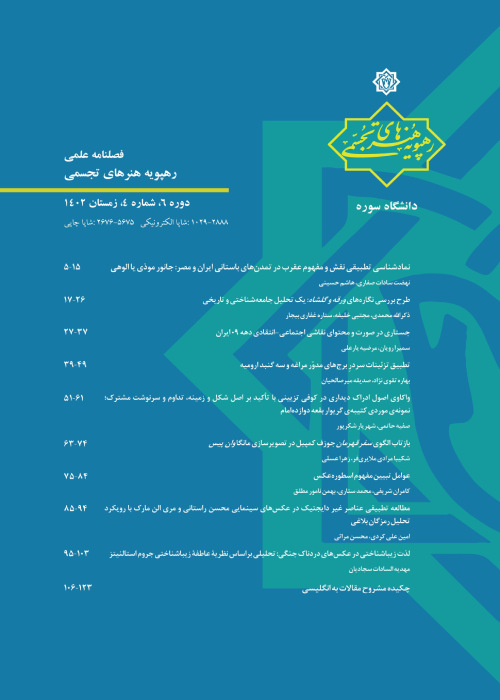In Seeking the Common Ground of the Pictorial Representation Processes (A Semiotic Essay in Picture)
The pictorial representation processes are of the most problematic, and at the same time, important issues that we face to in visual arts. Many thinkers have spoken about them and each of them has seen this issue from some point of view and presented some theories, and each of these theories has also set out some discourse and resulted in the other discourses that sometimes are very constitutional. Needless to say, such a breadth requires us to deal with the common ground of some numbers of the most fundamental of these insights. What is done in this essay is the consideration of some of the most important of these theories based upon the Charles Sanders Peirce’s semiotics, so as to find out whether we can find some common ground, while not so much limited, between these theories and whether we finally can identify some particular kind of audience. The result is that the theories under our discussion introduce some particular audience to us who is the reactive audience and can’t make any change in the picture before her. Then these theories, with all of the trivial and important differences they have, tell us about an audience’s subjective states who doesn’t want to roll up the sleeves and transform or transpose the representational relationships. She is the one who is accustomed to thinking and as though this thinking never is to be resulted in some physical action. The reactive audience who can’t or don’t want to change anything, in the eyes of each of these theories has a particular personality. In some of them, she is imaginative, and in some others is down-to-earth and rational someway. Some see her as somebody who is shifty and has an obscure mindset. We would set up a study based upon the Kith Kenney’s categorization concerning representation theories which itself is based upon the Peirce’s point of view about the signs, and we must say that the distal task is to lend weight to existence of some common ground between the sign-based theories. We would organize the theories which Kenney observes and add them some other perspectives, and in some cases go deep into the concepts and noise out some more details about them as much as possible so as to find out whether Kenny has overlooked some prospects -and that in our view is the case. We would make the case for some similarities between these theories and capture that our brother’s brain that seems to be intricate, is near enough simple really. The proximal task then is to focus upon the main mood of these theories which in turn speaks for the conceptions incepted and conceived through some normal person’s mind. Thus our discussion is mainly concerned with the notions regarding the indivisuals whose mental states are under our scrutiny. As you would see, each of these theories are fit into the Kenney’s categorization with an eye to the main elements of them in constitutive relation to the kinds of the sign, but these encapsualtions are not decisive anyway, and we point to this issue now and then somehow.


